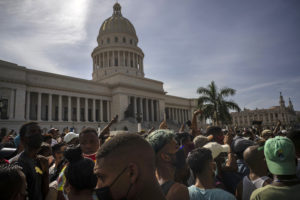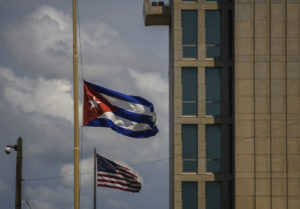To see WOLA’s media advisory on this meeting, please click here.
On Tuesday, January 29, Secretary General of the United Nations Ban Ki-moon and Secretary General of the Organization of American States (OAS) José Miguel Insulza will join 33 Latin American heads of state at the Havana meeting of the Community of Latin American and Caribbean States (Comunidad de Estados Latinoamericanos y Caribeños, CELAC). Their attendance signals the growing diplomatic importance of the regional body.
CELAC, founded in 2011, includes all of the nations of Latin America and the Caribbean but, unlike the OAS, it does not include the United States or Canada. CELAC has held summit meetings in Venezuela, in Chile, and now in Cuba. While countries in the region have a variety of political disagreements and border disputes, every head of state will attend the meeting, reflecting a growing interest in regional integration and regional power.
The heads of state are expected to discuss measures to combat poverty and inequality, support greater regional economic integration, condemn the U.S. embargo on Cuba, and support the peace process in Colombia.
With the emergence of CELAC, the OAS is no longer the only regional body for Latin American countries. CELAC is significant in that it represents Latin America’s increased autonomy from the northern hemisphere, particularly the United States but also Canada. The attendance of UN Secretary General Ban Ki-moon and OAS Secretary General José Miguel Insulza, along with that of the 33 Latin American heads of state at the Havana meeting, signals the growing diplomatic importance of the regional body.
CELAC’s autonomy is growing and real, though it is also relative, as the United States is still a major trading partner for many Latin American countries, including some of its most vocal critics, like Venezuela. And the OAS is still very important in the region as it has standing institutions that CELAC lacks. In addition, many countries in the region want to be in a multi-lateral dialogue that includes the United States and Canada.
OAS Secretary General Insulza attended the last CELAC meeting in Peru, so on one level this visit is a continuation of an existing policy in which he, and indirectly the OAS, recognizes CELAC as an important regional body. At the same time, the Secretary General’s attendance in Havana has meaning in the context of the history of Cuba and the OAS.
Cuba was suspended from the OAS in 1962, in the context of the Cold War, and as part of a larger U.S.-led effort to isolate Cuba. With the end of the Cold War two decades ago, Cuba has been gradually re-integrating into the hemisphere. In Latin America, that re-integration is mostly complete—every country in Latin America (and in fact, every country in the hemisphere except the United States) now has normal diplomatic relations with Cuba. But re-integration into the OAS has not happened, principally because of continuing U.S. opposition. In 2009, a number of Latin American countries led an effort to end Cuba’s suspension. But because of U.S. pressure, the OAS agreed that Cuba’s full membership would be dependent on Cuba’s endorsement of the Inter-American Democratic Charter and other treaties. In theory, approving the charter would require Cuba to make significant political changes. Cuba, not surprisingly, has not taken any steps to sign the charter and become an active member of the OAS.
However, Cuba has gone on to join other regional bodies and has played an important role in the formation of CELAC. Cuba does not appear to be suffering from its absence from the OAS.
Ironically, Cuba’s absence has started to cause problems for the Summit of the Americas, a gathering of the hemisphere’s leaders convened every three years by the OAS. Because Cuba is not an OAS member, it is not invited to the Summits. At the 2012 Summit, this issue was raised by a number of countries, who demanded that Cuba should be a participant in this hemispheric forum, and who threated to not attend the 2015 Summit if Cuba were not invited.
It is in that context that Insulza’s visit is significant. It suggests that Insulza is open to better relations between the OAS and Cuba, and might try to seek a creative diplomatic resolution to the question of whether Cuba will be invited to the 2015 Summit.
On Cuba’s side, there is an opportunity as well. The long-term success of Cuba’s economic re-insertion into the global economy will require it to have a fuller range of commercial and trade relations than it has now. Cuba has been strengthening its relations with China, Russia, and Brazil. Ultimately, it is going to have to strengthen its relations with the rest of Latin America, with the European Union (EU) and with the United States. Cuba is clearly, for its own reasons, making some of the economic (and potentially some of the political) reforms that the EU and others would like to see. This makes it easier for Cuba to pursue a strategy of fuller engagement without seeming to surrender its principles. Inviting Insulza is part of that—a signal that Cuba wants to re-engage with actors in the hemisphere that it has never before shown interest in. It doesn’t mean that Cuba is angling to join the OAS, but it is in their interest to have civil discussions, and more open doors.
It is likely that the Secretary General accepted the invitation because he’s open to better relations between the OAS and Cuba, and hopes to find a creative solution to the looming problem of the 2015 Summit and Cuba’s participation.
Geoff Thale is WOLA’s Program Director.


